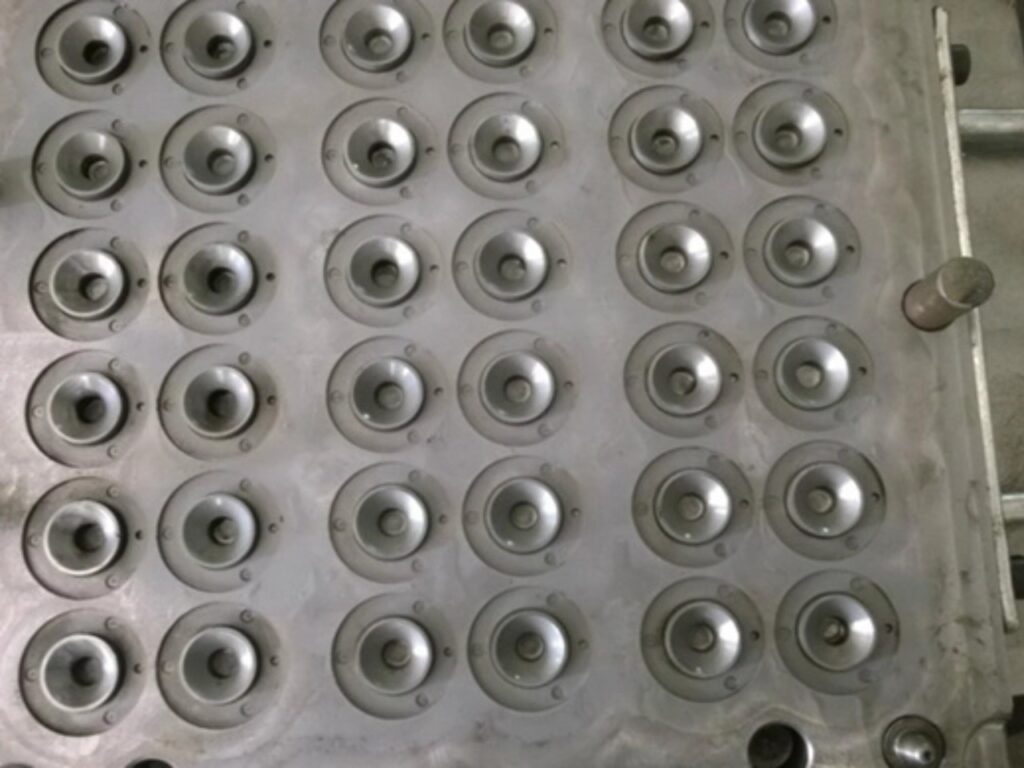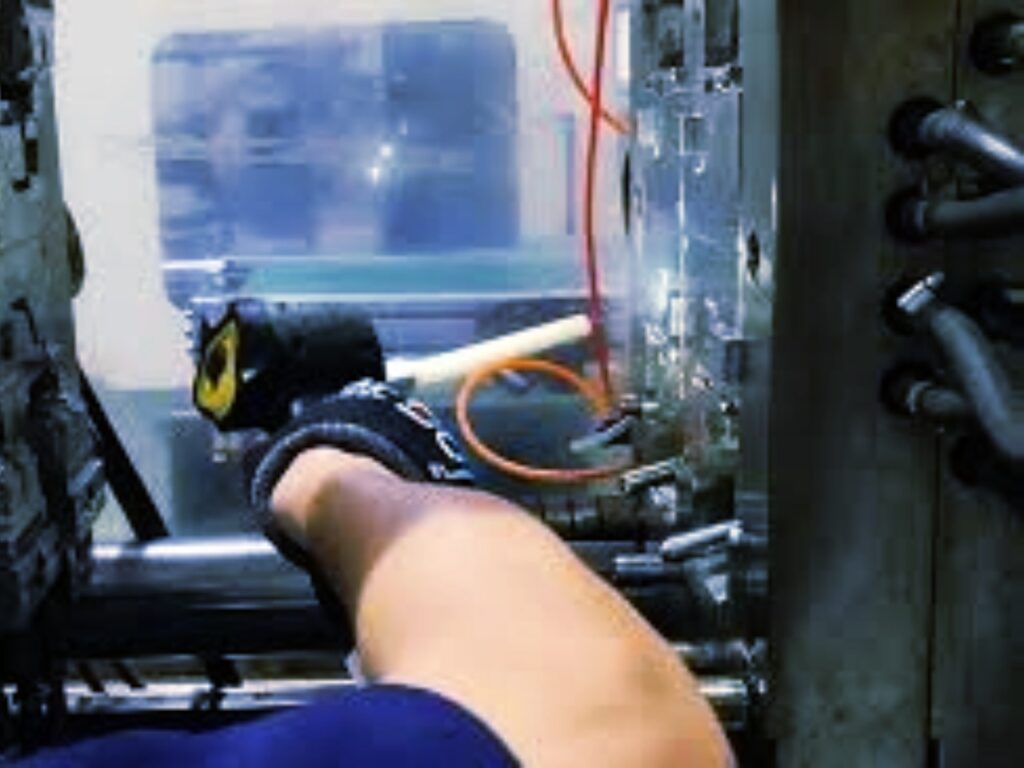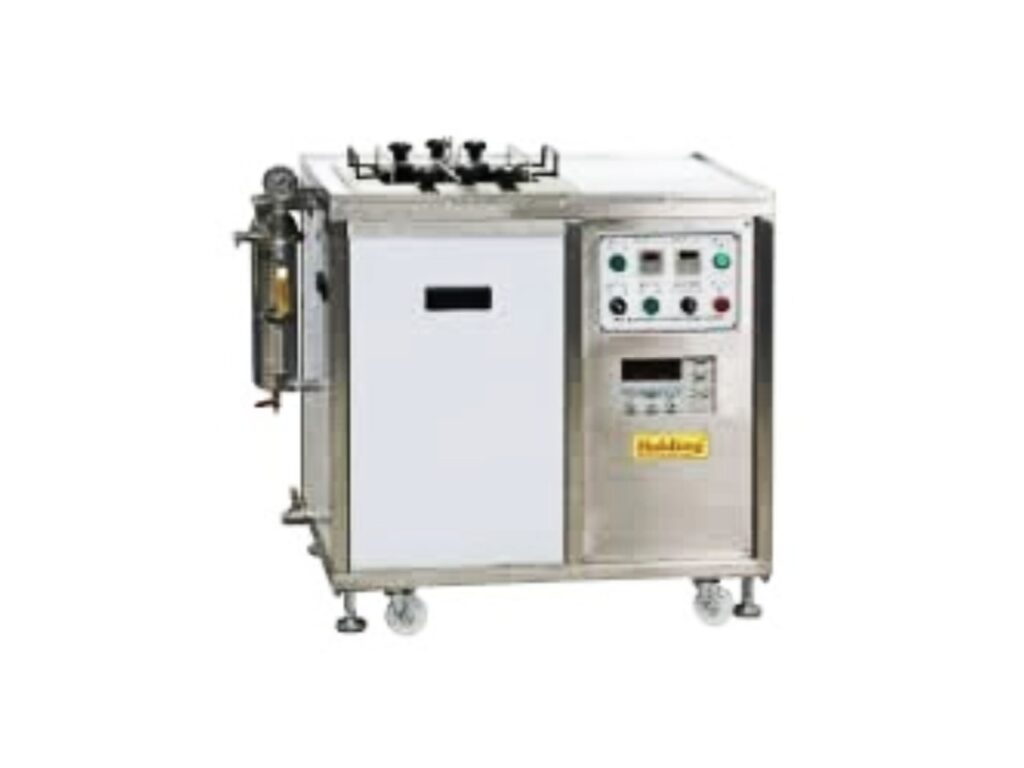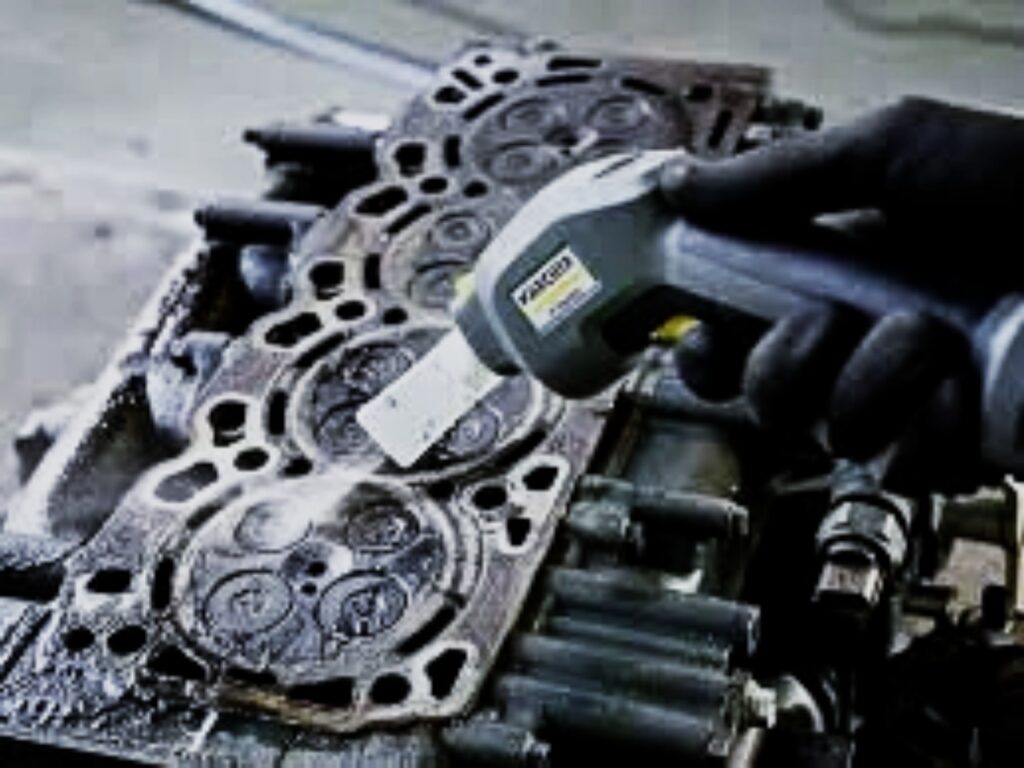How to clean mold is one of the most critical—yet often overlooked—aspects of injection molding operations.
Regular and thorough cleaning not only ensures product quality and consistency but also extends mold life, reduces downtime, and prevents costly repairs.
This comprehensive guide covers everything you need to know about effective mold cleaning, from daily maintenance to deep cleaning procedures.
Why Mold Cleaning Matters

Mold cleaning is essential for several reasons:
- Maintains Product Quality: Prevents defects like black specs, splay, and contamination
- Extends Mold Life: Prevents corrosion and damage to precision surfaces
- Ensures Production Efficiency: Reduces downtime and improves cycle times
- Prevents Costly Repairs: Addresses issues before they become major problems
Safety First: Precautions Before Cleaning
Always prioritize safety:
- Wear appropriate PPE: safety glasses, heat-resistant gloves, and protective clothing
- Ensure the mold is completely cooled before beginning cleaning procedures
- Lock out/tag out the injection molding machine to prevent accidental startup
- Work in well-ventilated areas when using chemical cleaners
Daily Cleaning Procedures
Basic Maintenance Between Cycles
- Visual Inspection: Check for obvious contamination or damage
- Air Blowoff: Use filtered, dry compressed air to remove loose debris
- Surface Wiping: Use a lint-free cloth with appropriate cleaner for visible residue
- Vent Cleaning: Clear ventilation channels with brass tools
Recommended Tools for Daily Cleaning
- Soft brass or copper tools
- Lint-free cloths
- Plastic scrapers
- Mold-safe cleaning solutions
- Magnifying glass for inspection
Weekly Cleaning Procedures
Deep Cleaning Process
- Mold Removal: Safely remove mold from machine when possible
- Disassembly: Carefully disassemble components per manufacturer guidelines
- Solvent Cleaning: Apply appropriate cleaning solutions
- Mechanical Cleaning: Use ultrasonic cleaners for small components
- Reassembly: Carefully reassemble with proper lubrication
- Testing: Run test cycles to ensure proper function
Chemical Cleaning Options
Water-based cleaners
- Biodegradable and environmentally friendly
- Effective for most common residues
- Safe for most mold materials
Solvent-based cleaners
- Powerful degreasing action
- Effective for silicone and oil residues
- Require proper ventilation
Acid-based cleaners
- Remove oxidation and rust
- Require careful handling and neutralization
- Not suitable for all mold materials
Specialized Cleaning Methods

Ultrasonic Cleaning
Best for: Small components, intricate geometries
Process:
- Submerge parts in cleaning solution
- Use ultrasonic waves to create cavitation bubbles
- 15-30 minute cycles typically sufficient
- Rinse and dry thoroughly
Dry Ice Blasting
Best for: In-place cleaning, delicate surfaces
Advantages:
- Non-abrasive and non-conductive
- No secondary waste generated
- Minimal disassembly required
- Environmentally friendly
Laser Cleaning
Best for: Precision cleaning, rust removal
Benefits:
- Extremely precise control
- No surface damage when properly applied
- No chemicals required
- Digital precision mapping
What is dry ice blasting?
Dry ice blasting is a revolutionary cleaning technology that uses solid carbon dioxide (dry ice) particles as the cleaning medium, accelerated by high-pressure air and directed at the surface to be cleaned.
This non-abrasive, non-conductive cleaning method is particularly well-suited for the maintenance of precision molds and is rapidly replacing traditional cleaning methods in the global manufacturing industry.
Working Principle of a Dry Ice Blasting Machine
Basic Workflow
- Dry Ice Preparation: Liquid carbon dioxide is converted into dry ice pellets or granules.
- Acceleration: Dry ice pellets are accelerated in the spray gun by compressed air.
- Surface Impact: High-speed pellets impact the contaminated surface.
- Sublimation: Dry ice pellets instantly sublime (converting directly from solid to gas).
- Dirt Stripping: Rapid volume expansion (approximately 800 times) creates a micro-explosion effect, stripping away dirt.
Three Major Cleaning Mechanisms
- Kinetic Energy: Kinetic energy generated by high-speed particle impact.
- Thermal Shock: The low temperature of -78.5°C causes dirt to become brittle and shrink.
- Sublimation: Dry ice vaporizes and expands in volume, stripping away surface contaminants.
Key Components of a Dry Ice Blasting Machine

Core System
- Dry Ice Generator: Produces dry ice pellets of the desired size.
- Storage System: Insulated container to prevent sublimation of the dry ice.
- Spraying System: Includes the air compressor, dry ice blaster, and spray gun.
- Control System: Regulates pressure, flow, and dry ice usage
Key Parameters
- Operating Pressure: Typically 2-10 bar (adjustable)
- Dry Ice Consumption: 5-100 kg/h (depending on the application)
- Particle Size: Available in various sizes, including 1.5 mm and 3 mm
- Air Requirement: Depending on the equipment model, typically 3-10 m³/min of compressed air is required
Significant Advantages of Dry Ice Mold Blasting
Comparison with Traditional Cleaning Methods
| Cleaning Method | Cleaning Results | Risk of Mold Damage | Downtime | Environmental Impact |
|---|---|---|---|---|
| Dry Ice Blasting | Excellent | None | Short (In-Place Cleaning) | Environmentally Friendly |
| Chemical Cleaning | Good | Possible | Long | Chemical Contamination |
| Sandblasting | Good | Large | Long | Dust Contamination |
| Ultrasonic Cleaning | Good | Small | Long | Chemical Contamination |
| Manual Cleaning | Average | Large | Long | Small |
Specific Advantages
- Non-damaging Cleaning: Non-abrasive, no damage to mold surfaces or delicate textures
- In-line Cleaning: No mold disassembly required, significantly reducing downtime (70-95%)
- Thorough Cleaning: Capable of cleaning complex geometries and fine textures difficult to reach with traditional methods
- Environmentally Safe: No secondary waste, only removed dirt needs to be processed
- Drying Process: No water contact, eliminating rust problems
- Cost-Effective: Reduces labor costs and improves production efficiency
Specific Applications in Mold Cleaning
Applicable Mold Types
- Injection Molds: Removes release agent residue, carbides, silicone, etc.
- Die Casting Molds: Removes release agent carbon deposits and oxides
- Rubber Molds: Removes rubber residue and release agent buildup
- Blow Molds: Removes plastic residue and surface dirt
- Glass Molds: Removes glass residue and oxide layers
Types of Contaminants Removable
- Organic Residues: Grease, oil, release agents
- Inorganic Residues: Rust, oxides
- Polymerization Residues: Plastic and Rubber Residues
- Bonding Residues: Adhesives and Sealants
- Surface Contaminants: Dust, Carbon Deposits, Silicone
Practical Guide
Pre-Cleaning Preparation
- Safety Check: Ensure area ventilation and wear appropriate PPE (safety glasses, gloves, earmuffs)
- Equipment Inspection: Check air pressure, dry ice supply, and pipe connections
- Mold Assessment: Identify contamination type and severity
- Parameter Settings: Adjust pressure, flow rate, and spray angle based on contamination
Operational Procedures
- Test Spray: Test cleaning results in an inconspicuous area
- Systematic Cleaning: Clean various areas of the mold sequentially
- Focused Treatment: Focus on heavily contaminated areas
- Results Check: Regularly check cleaning progress to avoid over-cleaning
- Post-treatment: Remove dislodged contaminants and perform necessary inspections
Optimization Tips
- Maintain an appropriate spray distance (10-30 cm)
- Spray at a 45° angle for optimal results
- Use a fan nozzle to cover large areas and a round nozzle for stubborn stains
- Adjust particle size to address different types of contamination
- Control movement speed to ensure uniform cleaning
Key Factors in Selecting a Dry Ice Blasting Machine
Technical Considerations
- Production Capacity: Match production scale and cleaning needs
- Particle Quality: Uniform dry ice particles ensure effective cleaning
- System Reliability: Stable and reliable performance reduces downtime
- User-friendly design: User-friendly design reduces operational complexity
- Maintenance Requirements: Simple routine maintenance reduces operating costs
Supplier Evaluation
- Industry Experience and Success Stories
- Technical Support and Service Capabilities
- Spare Parts Supply and Repair Response
- Training and Comprehensive After-Sales Service
Safe Operation Precautions
Personal Protection
- Cryogenic Protection: Avoid direct skin contact with dry ice
- Noise Protection: Use earmuffs or earplugs
- Eye Protection: Wear protective glasses
- Respiratory Protection: Use respiratory protection in confined spaces
Equipment Safety
- Regularly inspect piping and connections
- Ensure proper ventilation
- Follow the manufacturer’s operating instructions
- Establish Emergency Shutdown Procedures
Addressing Specific Contamination Types

Silicone Removal
- Use specialized silicone removers
- Multiple applications may be necessary
- Ensure complete removal before production
Carbonized Material
- Use specialized carbon removers
- May require soaking and mechanical assistance
- Prevent with proper process parameters
Rust and Corrosion
- Use rust removers specifically designed for molds
- Apply protective coating after cleaning
- Address moisture sources to prevent recurrence
Mold Storage Cleaning Procedure
Proper preparation for storage:
- Perform complete deep cleaning
- Apply rust preventive coating
- Place in controlled environment
- Use desiccant plugs in water lines
- Document condition before storage
Establishing a Cleaning Schedule
Create a customized schedule based on:
- Material being run (PP, PVC, engineering resins)
- Production volume
- Mold complexity
- Previous issues experienced
Sample Cleaning Schedule:
- Daily: Visual inspection, air blowoff, surface wipe
- Weekly: Partial disassembly, detailed cleaning
- Monthly: Full disassembly, ultrasonic cleaning
- Quarterly: Professional inspection, corrosion control
- Annually: Comprehensive maintenance, recertification
Documentation and Tracking
Maintain detailed records of:
- Cleaning dates and procedures performed
- Issues discovered and corrective actions
- Components replaced or repaired
- Maintenance hours and costs
Common Mistakes to Avoid
- Using improper tools that damage mold surfaces
- Skipping safety procedures during cleaning
- Mixing incompatible chemicals that cause damage
- Incomplete rinsing of cleaning solutions
- Improper reassembly leading to damage
- Using excessive force on delicate components
When to Seek Professional Help
Contact mold cleaning specialists when:
- You lack proper equipment or expertise
- Delicate surfaces or coatings are involved
- Major corrosion or damage is present
- Production quality issues persist despite cleaning
Preventive Maintenance Tips
Reduce cleaning frequency with good practices:
- Establish and follow proper process parameters
- Use mold protection sprays during pauses
- Implement regular maintenance schedules
- Train operators on proper mold handling
- Maintain clean production environment
Conclusion
Effective mold cleaning is not just about removing contamination—it’s about preserving precision, maintaining productivity, and protecting your investment.
By implementing a systematic cleaning program tailored to your specific needs, you can significantly extend mold life, improve product quality, and reduce overall operating costs.
Remember that prevention is always better than cure.
Regular maintenance and proper operating procedures will minimize the need for aggressive cleaning methods and keep your molds in optimal condition for years to come.
